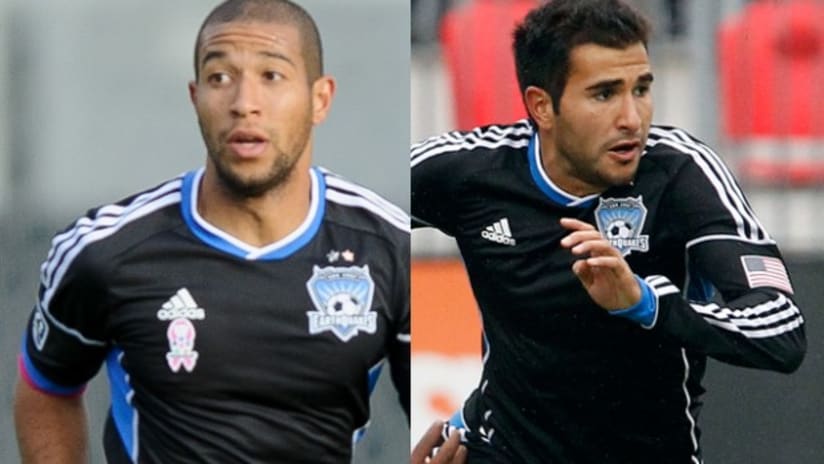Ever since they were selected with the 28th and 30th picks of the 2010 MLS SuperDraft, Justin Morrow and Steven Beitashour had been inseparable as teammates on the San Jose Earthquakes. They roomed together on the road, and both broke through to start for MLS against Chelsea in the 2012 All-Star Game.
Now it seems as though they will exit the Quakes’ roster together as well.
Morrow, supplanted in the starting lineup in 2013 by newcomer Jordan Stewart, was traded to Toronto on Tuesday in exchange for an undisclosed amount of allocation money. And Quakes general manager John Doyle told MLSsoccer.com by phone that he doesn’t think the out-of-contract Beitashour will return.
“I’ve spoken to [Beitashour] and asked him what he’s thinking, and he’s thinking that he wants to try it in Europe,” Doyle said. “And I don’t blame him. He’s a younger guy, he wants to see if he can make it there. The salaries in Europe are higher than in MLS, and with his recent stint with the Iranian national team, I think he feels his value’s at its peak right now and wants to take advantage of that. I understand that.”
If Beitashour joins Morrow in departing, the Quakes will retain his rights but would need to find more depth along their back line in the meantime. Doyle said that veteran Ty Harden, who deputized for an injured Beitashour at the start of 2013 before needing a season-ending surgery on his right hip, will be in the mix for the starting job at right back.
“Ty Harden did really well, then got hurt,” Doyle said. “We have Ty there, and then we’ll be looking for a right back.”
With Victor Bernardez and Clarence Goodson set as center backs, San Jose should have a stout back four, but one that raises concerns about age and international duties. Harden will turn 30 three days before the Quakes’ season opener, while the other three starters are already 31. And Bernardez (Honduras) and Goodson (United States) are both likely candidates to serve on their countries’ World Cup squads.
- Find more Quakes news at SJEarthquakes.com
The Quakes’ decision to trade Morrow was not a total shock. The 26-year-old inked a significantly improved contract in October 2012, and Doyle had already made it clear that San Jose would be doing some salary-cap pruning ahead of plans to sign attacking help this winter.
“You want to be like the old San Francisco 49ers, where you had three [starting-caliber] quarterbacks – Joe Montana, Steve Young, and [Steve] Bono,” Doyle said. “In Major League Soccer, you can have players making a good salary, but the players who aren’t starting? Those players need to be on a lower salary. . . . In our end-of-the-year session, it was clear: he’s on a starter’s salary and Jordan was going to be the starter.”
In addition, with the Quakes revamping their tactics under new coach Mark Watson, San Jose is trying to concentrate their payroll in the center of the park, rather than along the wings. Doyle identified an attacking force at midfield as the Quakes’ top priority after scoring just 35 goals this year.
“You have to look at the impact positions, and usually that’s down the middle,” Doyle said. “I don’t want to discount the sides, but the players in the middle usually command a higher salary than the guys wide.”
Even with the salary-cap room afforded by the Morrow move, the Quakes may not be done selling. Winger Marvin Chavez, who has told Honduran media that he wants out of San Jose, is in a similar situation to Morrow, having been replaced by the less-expensive Cordell Cato.
“I think we’re moving in the right direction,” Doyle said of the Quakes’ budget. “We’re creating space, but who knows if it’s enough space? We’re looking at a lot of players. . . . So I don’t know where it will land yet.”













